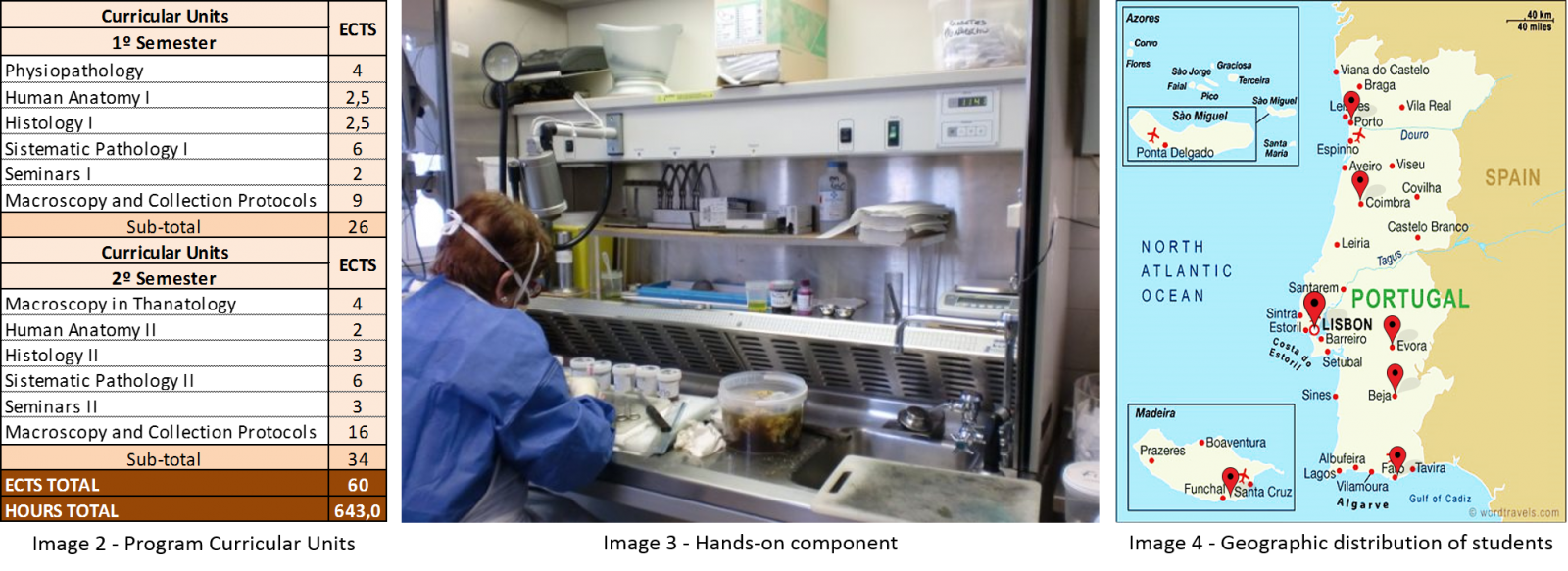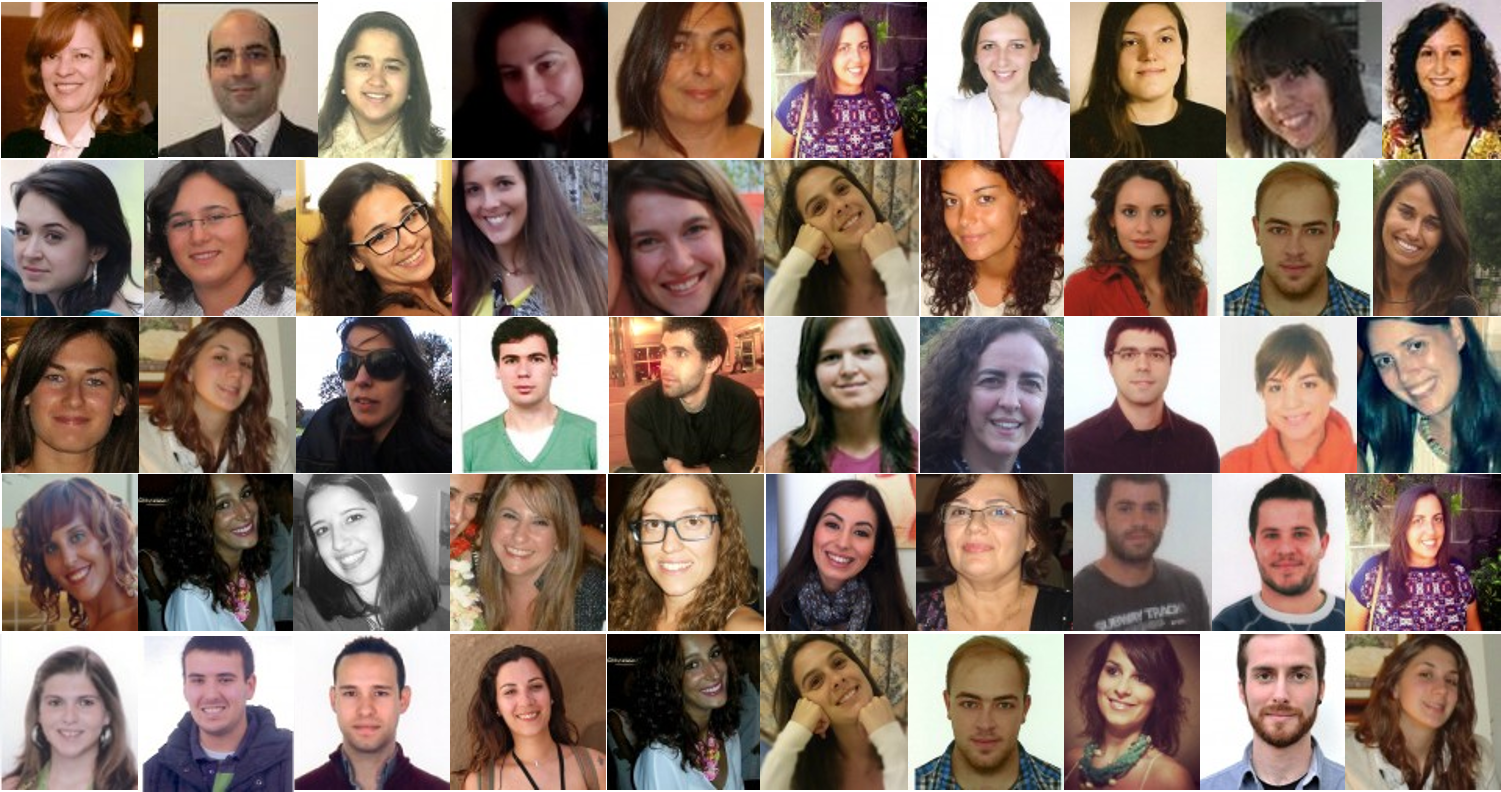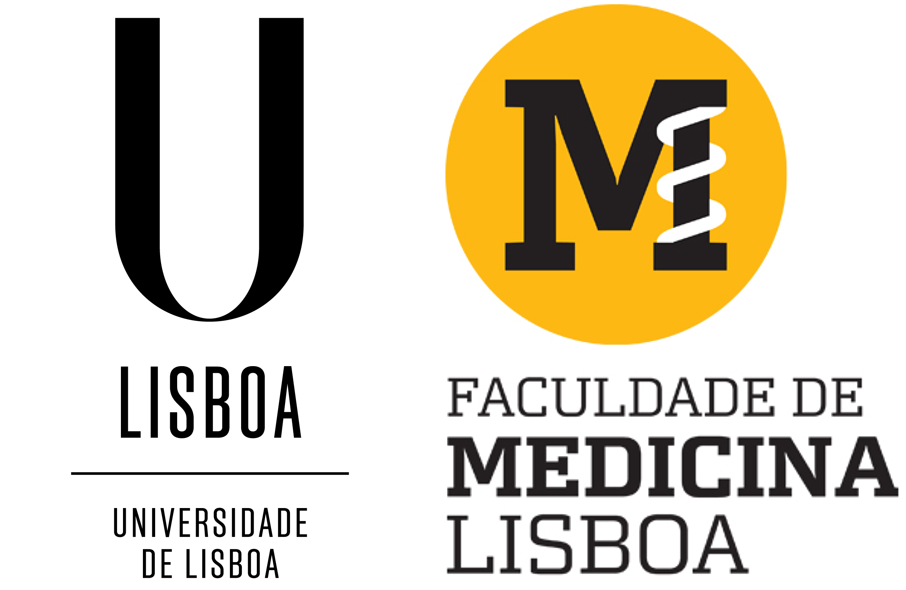
| Theme: 4AA eLearning courses | |||
 |
||||||
| eLearning in the context of a one-year postgraduate course in macroscopy in pathology: benefits of a multifaceted and pluripotent concept |
 |
|||||
|
||||||
Performing Macroscopy in Pathology implies to plan and implement methods of selection, description and collection of biological material from human organs and tissues, actively contributing to the clinical pathology analysis by preparing macroscopic report and the collection and identification of fragments, according to the standardized protocols and recognizing the criteria internationally established for determining the prognosis - image 1.

The Macroscopy in Pathology course is a full year program with theoretical and pratical components taught by Pathologists - image 2. It is divided by organ/system surgical pathology into weekly modules and includes a practical "hands-on" component in Pathology Departments - image 3. The students are 50 biomedical scientists aged from 22 to 50 years old from all across the country that want to acquire competences in macroscopy - image 4.

A blended learning strategy was used in order to:
- Give students the opportunity to attend from distance - image 5;
- Support the contents, lessons and the interaction with colleagues and teachers - image 6;
- Facilitate the formative/summative assessment - image 7.

Technologies were used in two ways:
- moodle was used as a repository of lessons, literature and documentation, online review provider and discussion forums source - image 8;
- video-conference software "colibri" was used to provided on-line lectures to students placed in Lisbon, Porto, Coimbra and Madeira. Lectures were recorded and later made available to students - image 9.

Students were assessed weekly using on-line tests in moodle and twice a semester by in-loco written tests, in addition to other assessments. Overall, the learning results achieved are extremely positive lending credit in favor of this educational methodology.
The satisfaction of students was assessed, yielding very positive evaluations - image 10:
- eLearning has been very useful because it allows access to course content everytime everywhere;
- eLearning was the only way that I could attend this course;
- eLearning has been very useful for weekly assessments that keep us always on-time with the program contents.

The strategies allowed to overcome the geographical barrier. In addition, the on-line availability of contents/assessment, together with the recorded lessons, allows to overcome the barrier of incompatible schedules and calendar.
In general, this blended-learning strategy was efficient and contributed massively to the success of the Portuguese Macroscopy in Pathology Program - image 11.

Image 11 - Program students
eLearning improved the Macroscopy in Pathology Program quality and gave opportunity to all students to attend.
To all the students that participated in the program.
To the collaborators that cooperated with us in the preparation of the program.

Dror I, Schmidt P, O’connor L. A cognitive perspective on technology enhanced learning in medical training: Great opportunities, pitfalls and challenges. Med Teach. 2011;33(4):291-296. doi:10.3109/0142159X.2011.550970.
Moeller S, Spitzer K, Spreckelsen C. How to configure blended problem based learning–Results of a randomized trial. Med Teach. 2010;32(8):e328-e346. doi:10.3109/0142159X.2010.490860.
Dennick R, Wilkinson S, Purcell N. Online eAssessment: AMEE Guide No. 39. Med Teach. 2009;31(3):192-206. doi:10.1080/01421590902792406.
Romanov K, Nevgi A. Do medical students watch video clips in eLearning and do these facilitate learning? Med Teach. 2007;29(5):490-494. doi:10.1080/01421590701542119.

 Send Email
Send Email